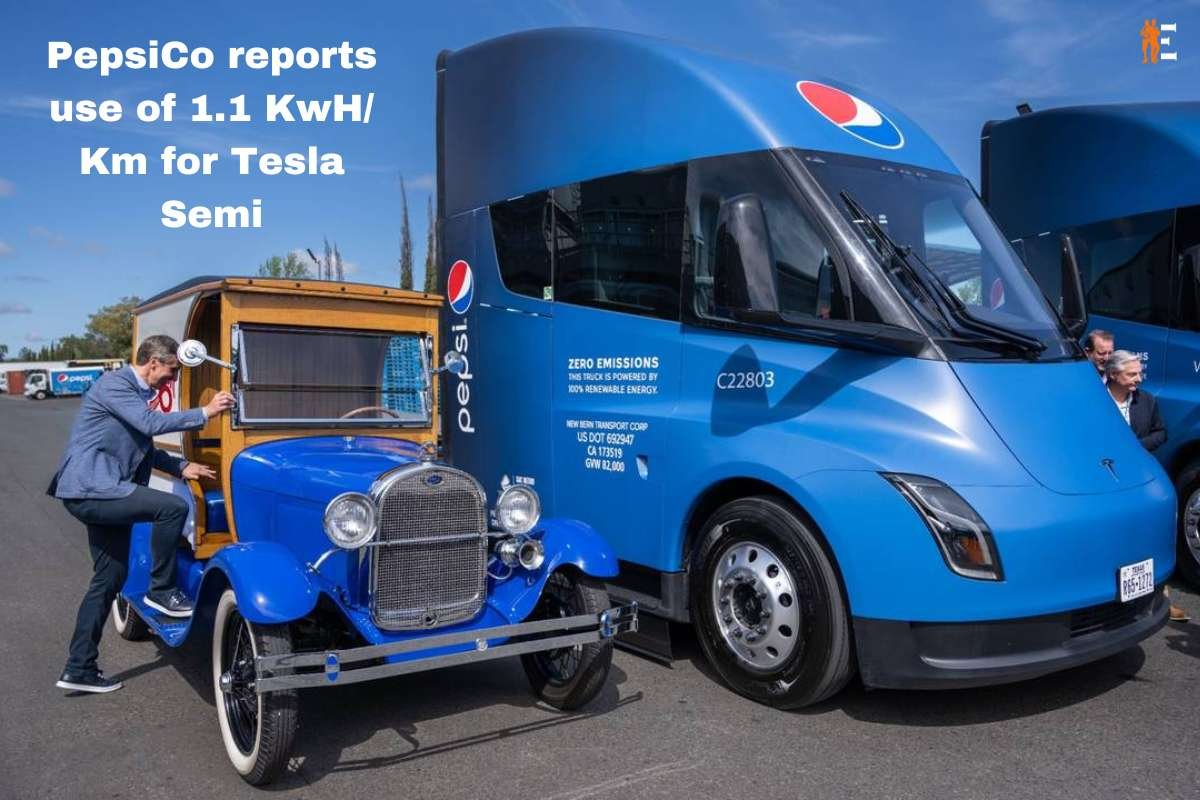Near a Californian bottling facility near Sacramento, PepsiCo uses 21 Tesla Semis. The beverage firm gave some insights into the everyday logistical process with the US Class 8 all-electric cars in a video, including remarks on consumption, recuperation, or the Tesla truck’s range, which is still mostly unknown in terms of its technical data.
History of PepsiCo and Tesla Semi
Only PepsiCo and the regional energy supplier Sacramento Municipal Utility District (SMUD) are included in the video, which was created by the North American Council for Freight Efficiency (NACFE), while Tesla officials are not heard from. Only a few of the Semi electric trucks from the EV Company have been delivered, and the majority of them have probably gone to PepsiCo.
About five and a half years ago, the beverage firm placed the Tesla Semi’s first order. PepsiCo was the first business to introduce the electric truck as a fleet vehicle in its corporate design in April. At the beginning of December 2022, Tesla began making deliveries of the Semi. The manufacturer does not offer a delivery update directly. However, Teslamag adds that PepsiCo likely received 36 of the 100 Semis ordered so far: 15 are in use at subsidiary Frito-Lay in Modesto, California, and 21 at the main plant in Sacramento, citing a recall by the US authority NHTSA from June.
Pepsico explaining how it uses Tesla Semi electric trucks
Statistics of the Tesla Semi
The later 21 are the subject of the NACFE video. It verifies that four Tesla chargers with a combined charging capacity of 750 kW have been installed at the Sacramento location. They are expected to enable charging to 80% in under 45 minutes. The Semi is touted to be able to charge from 5 to 10 percent to 95 percent in 20 to 30 minutes in other parts of the video.
For deliveries within a 100-mile (160 km) radius with many stops, PepsiCo uses 18 of the 21 Tesla Semis in shifts that can last up to twelve hours. Using electric vehicles for these brief travels between the company’s bottling warehouse in Sacramento and distribution locations, according to Amanda DeVoe, Transformation and Strategy Director at PepsiCo, is particularly advantageous. Dejan Antunovic, head of PepsiCo’s electrification strategy, asserts that the remaining three units would unquestionably be utilised for lengthy trips of 250 to 450 miles (about 400 to 725 km). When fully loaded, Tesla claims that the electric truck has a range of 500 miles (more than 800 km).
The Tesla Semi’s recovery is another aspect worth noticing. According to Antunovic, the Tesla truck may use braking energy to propel itself back from the Donner Pass in the Sierra Nevada in an energy-neutral manner. The programme manager reveals a specific efficiency figure as well: PepsiCo achieves an average efficiency of 1.7 kWh per mile with the Tesla Semi, which is equivalent to 1.1 kWh per kilometre. On the Tesla website, it says “less than 2 kWh per mile.”











